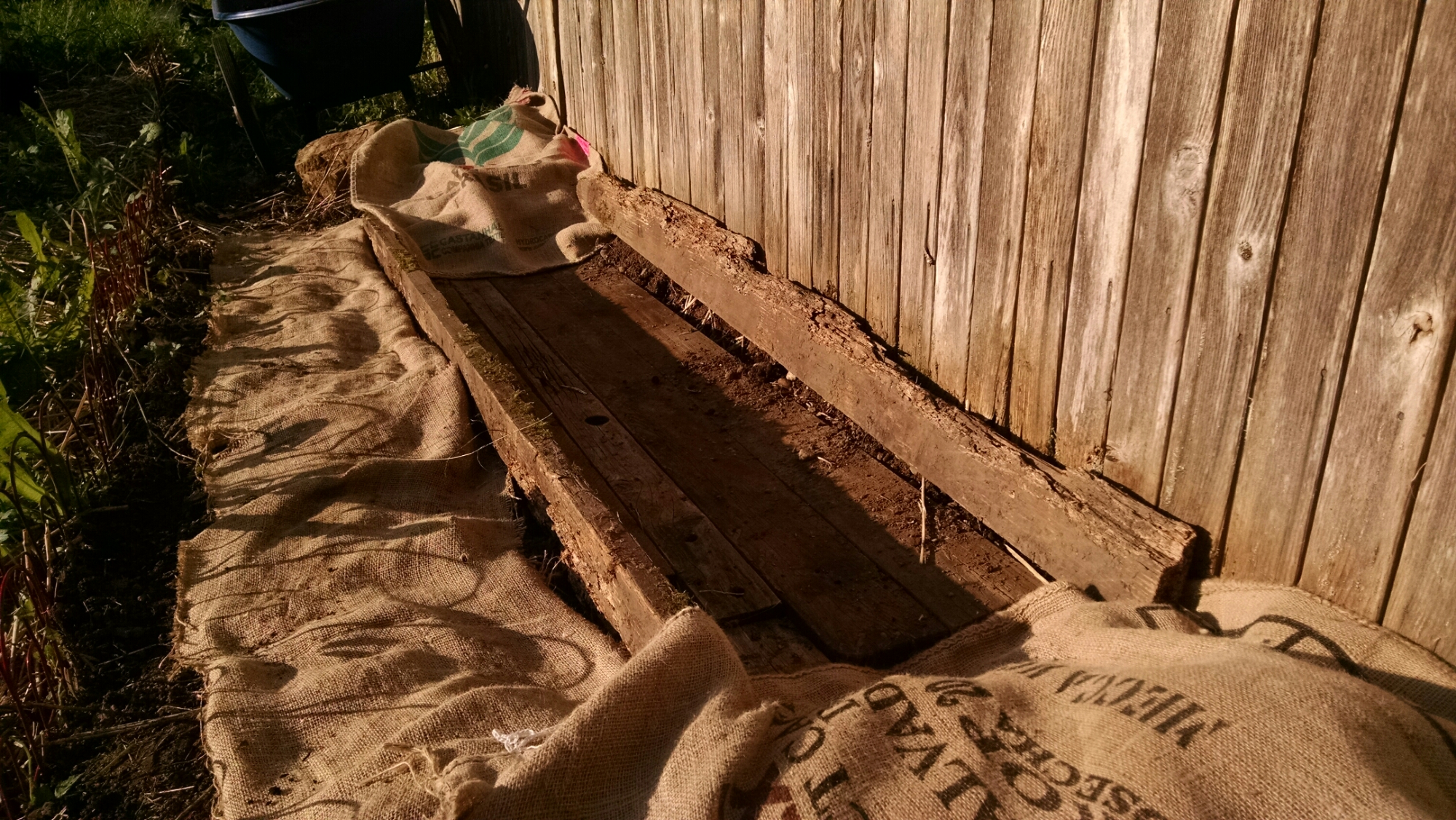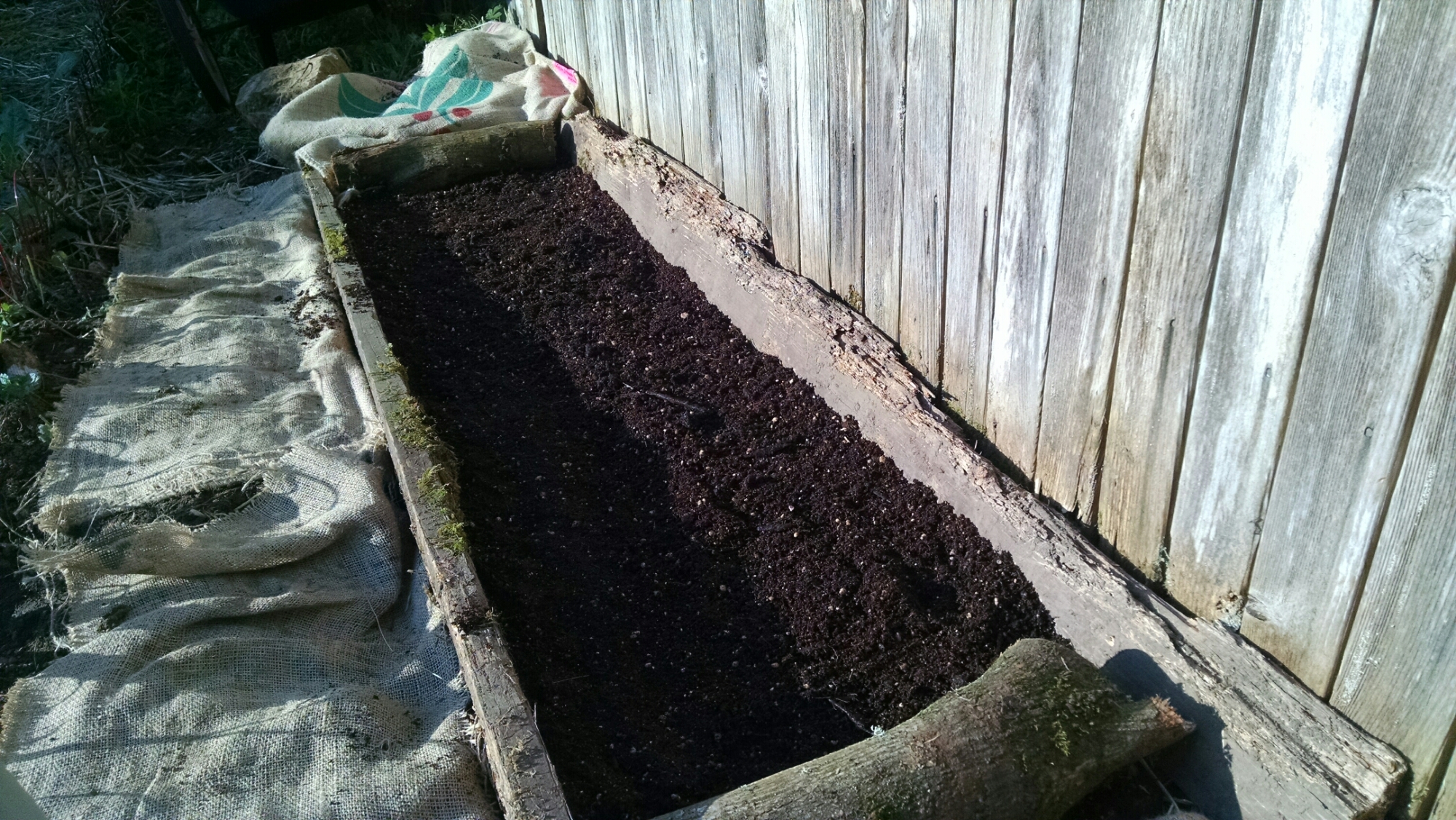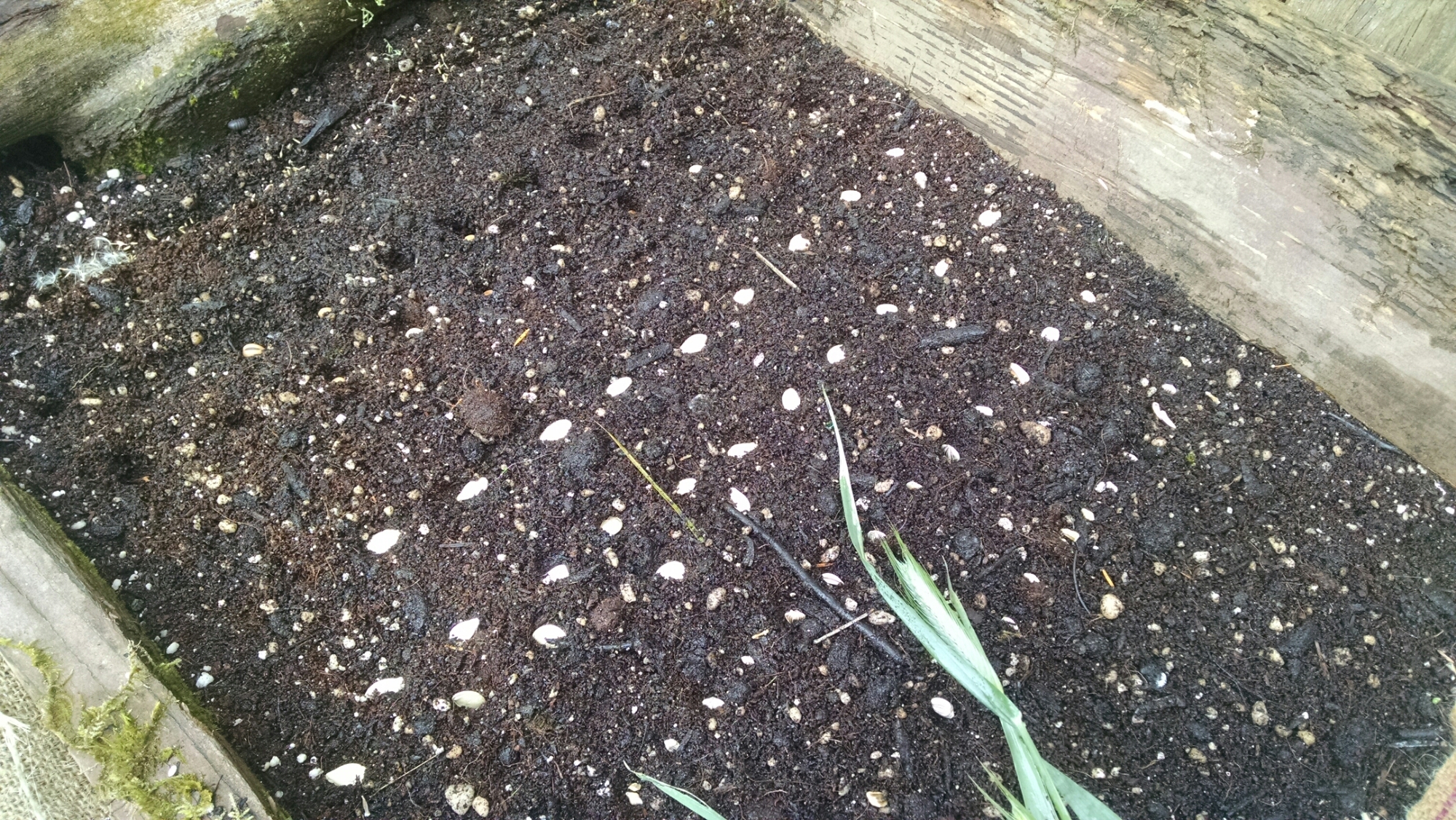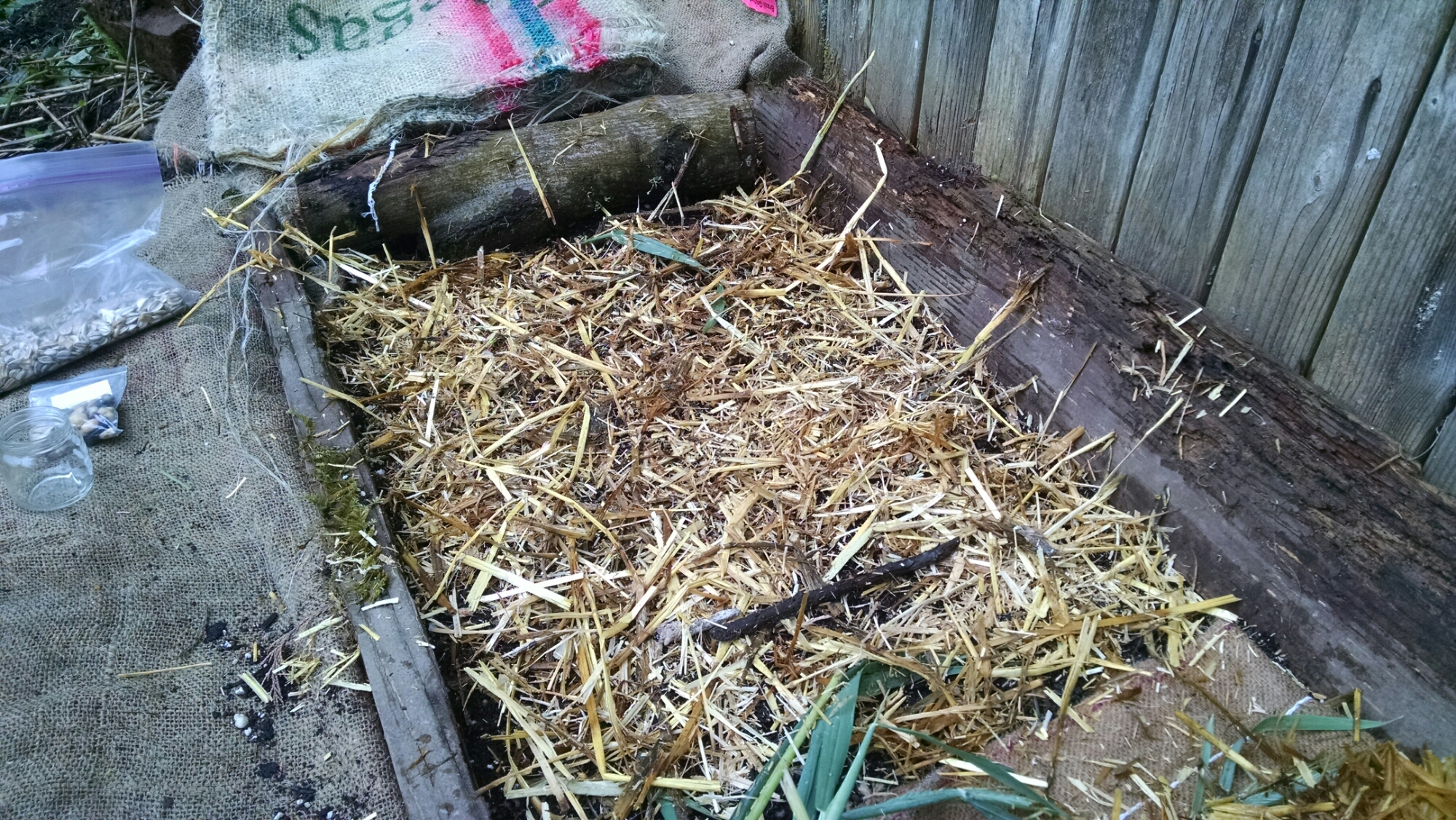We are going through a gradual process of getting more access to land to grow food on — and not just from buying our own land. Here is how we (and a few others) have found space. But first, I want to take an idealistic diversion to talk about why this is not just a practical way to grow food, but also a deeply important and good thing to do. Feel free to skip this section if you want to get straight to the practicalities…
The rightness of gardening any available land
In the Bible, there is a passage pretty near the start that says we are to fill the earth and subdue it. I do not take this to mean pavement and strip malls. This blessing was given in a garden, and it seems to me that the idea is for us to fill the earth with abundance, wisely tending the land to make it teem with useful life.
Most of the food that is created in our modern world is ruinous to the health of the people who eat it, and ruinous to the land. The deeper you dig into where our food comes from, the more you find adulteration and greed. It is so far backwards of what the original commandment and blessing that we were given.
We were created to tend land, in community with others, and share in the abundance. Not to dominate it by ploughing million-acre cornfields, but to subdue it with gardens teeming with every kind of natural life. The bible says — and I believe — that this is literally what we are made for. When properly subdued, all land can become made more productive by any measures, more diverse, and more beautiful.
Gardening anywhere, and especially in partnership with others, is fundamentally worthwhile. If you can eat the produce, that is wonderful. And given the scarcity of real food today, any of it that you can share is a blessing. I count it a privilege if I can get food growing anywhere, that anyone will eat.
At our apartment
After we filled our small deck with containers, our first tiny step towards expanding our garden was to approach the manager about letting us use a tiny (and I mean tiny!) little piece of ground at the bottom of our external flight of stairs. It was out of the way and we were granted permission. We grew a few potatoes and raspberries. Had we stayed there another year, I would have asked for more space – there was plenty of ground that could have been gardened there.
In this case, being out-of-the-way or aesthetically pleasing was important. Fortunately, there are a lot of herbs and vegetables that are absolutely beautiful and can fit in fine with ornamental plantings. If we had asked for more space, we would have approached the conversation with “let us maintain this area for you, for free, and here is how we will make it look nice.”
Many herbs are beautiful, and are sometimes grown purely for ornamentation. Rosemary, sage, and lavendar, for example. Mint, lemon balm, bee balm, and other mint family plants can fill areas with aromatic, attractive foliage. You can even plant a lot of things that are generally considered ornamental that are actually great edibles: for example, hostas have edible spring shoots, and nasturtiums have edible leaves and seeds which can be pickled to serve as capers.
In our neighborhood
We have a neighbor with a great big lawn (probably a half an acre) that gets mostly full sun. So we asked them if they would be okay with us planting an orchard there, and sharing the fruit with them. It would increase their property value, give them a variety of fresh fruits, and it would give us space to grow fresh fruits. A win-win.
And they said no, because they are planning to build something there someday. That was disappointing.
We have another neighbor, maybe a quarter mile down the street, who has a 40 acre lot that was clear cut a few years back. I asked him if I could scatter some seedballs on his land to see what varieties worked well in our area for doing that. And he told he that I could use an acre for that this year, and we are talking about planting rootstock apple trees from seed over a lot of the land. Hopefully we will grow hundreds of seedlings, give a ton away and have enough left for a nice big orchard. This is very exciting!
It took more than a year between thinking that I should talk to the person who owned the clearcut, and finally having the guts and followthrough to do it. And if the owner was not as friendly and open as he turned out to be, the answer probably would have been no. But if he had not said yes, someone else would have. Talk to your neighbors!
Guerilla style
My style generally includes asking for permission to do things. I have a friend (you know who you are…) who occasionally, and by that I mean regularly, indulges in guerilla gardening. There was an empty lot that he operated a community garden on for years. When the owner of the lot finally noticed, he thought it was a neat idea, and put together a $10 a year lease for the land. Sadly, a year or two later the lot was developed.
Now my friend is gardening in a strip of grass alongside the road that runs by his apartment. He is making a series of keyhole beds as he gets his hands on organic matter to fill them with. Search for “keyhole garden” if you are unfamiliar with the idea, they are fantastic drought-friendly garden beds. The crew that maintains the grass simply mows around his beds, and there has not been a problem. Only fresh, real food.
Tim Peters, something of a legend in the plant breeding world, would use the sides of roads for isolating different trials of his perennial rye project. Periodically along the roadside he would plant a few rye plants, and they would simply blend in with the various grass and weeds along the road. He was able to significantly expand his ability to experiment by doing this.
On the internet
I have tried a few different ways to arrange garden space over the internet. There are several yard-sharing websites designed to connect people who have extra yard space with people who want to garden. Those did not work for me, because they either didn’t cover my region, or the people I contacted never responded. That was disappointing.
What worked the best was posting to my and adjacent neighborhoods on nextdoor.com, a social network for neighborhoods. I posted to ask if anybody had yard space for a project to breed drought resistant vegetable varieties, and said that I would share what was not needed for saving seeds. There were somewhere between a half dozen and a dozen responses, about 4 or 5 people who stayed in communication, two people who were ultimately interested, and one person who I had time to actually work with before we left.
Lessons
- Think about what you can offer — free maintenance, beautification, produce, teaching, or improvement of property value. Or all of the above!
- If you want to find some space, be willing to talk to a number of people. Some will say no, some will be interested but fall by the way. If you are persistent, you will find somebody who says yes.
- And if you are thoughtful about it, you probably don not need to be afraid of turning unused public-ish space into gardens.
- If you can have a project for the space you are seeking, it can help you get interest. For example, a seed breeding project, or maybe sharing with a food bank. One of the best things about gardening is that it opens a world of abundance. It does not take much effort to grow a large amount of food to share.
- It is okay to garden for purely esthetic and practical ends (i.e. getting good food). It is also okay to garden with lofty, idealistic notions about changing the world (a little bit) and living the life we were created for. And it is especially okay to do both. : )



